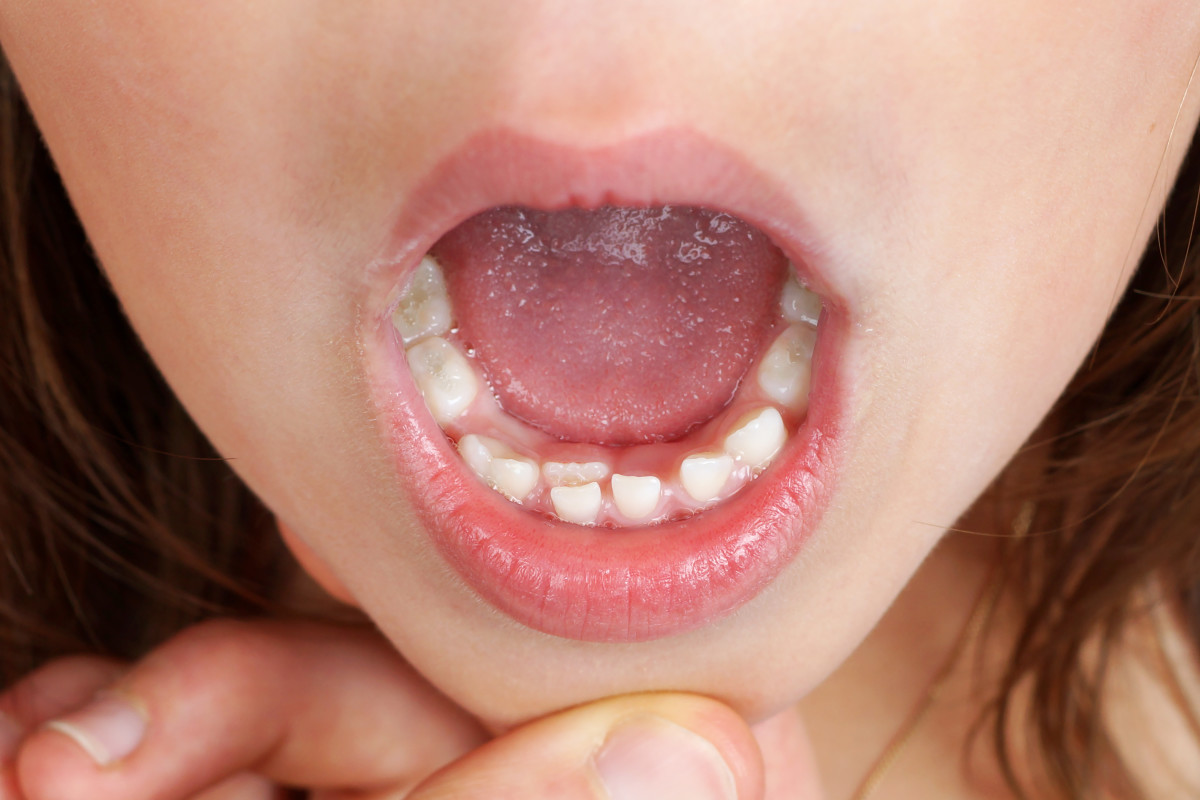Usually, baby teeth become loose as the replacement adult tooth in the bone begins to push it’s way out. Most commonly, once the baby tooth and it’s root get dissolved by the replacing adult tooth, the baby tooth becomes very lose and falls out on its own or with a little help from the child. Every once in a while, the adult tooth will push its way in the mouth, but won’t completely dissolve the baby tooth. When that happens, the baby tooth doesn’t get quite loose enough to fall out at the normal time. Interestingly, the research is actually inconclusive as to why some adult teeth don’t push out the baby teeth appropriately. There are possible genetic components, but are also environmental factors, trauma, infection and endocrine disorders that can be the cause.
Fortunately, this issue self-corrects most of the time. If the adult tooth is coming in while the baby tooth is still in the mouth, we usually check to see how wiggly or loose the baby tooth is. We also check to see how much of the baby tooth’s root has dissolved and how much space the child has in the mouth. Sometimes an X-ray is important in helping us determine how much baby root still remains in the bone. Once we have the whole picture, most times we allow the tooth to fall out on its own. On the rare occasion we are concerned the retention of this tooth will affect the overall health of the mouth, we will recommend the extraction for the baby tooth. We also end up taking these teeth out if they become symptomatic or is there is an aesthetic concern.
Always feel free to call or schedule an appointment if you see anything in your child’s mouth that concerns you. That’s why we are here!

